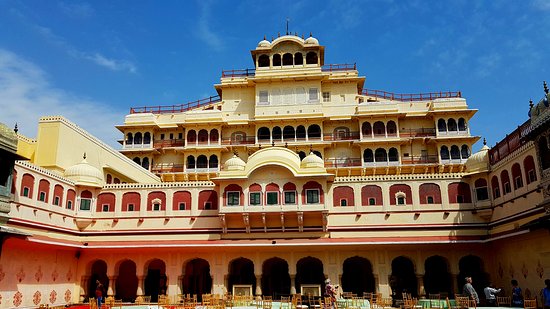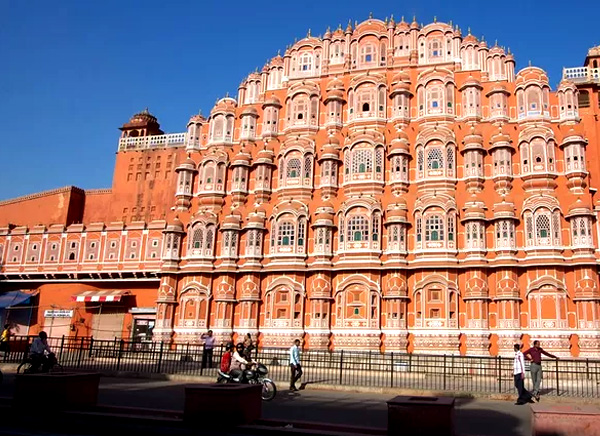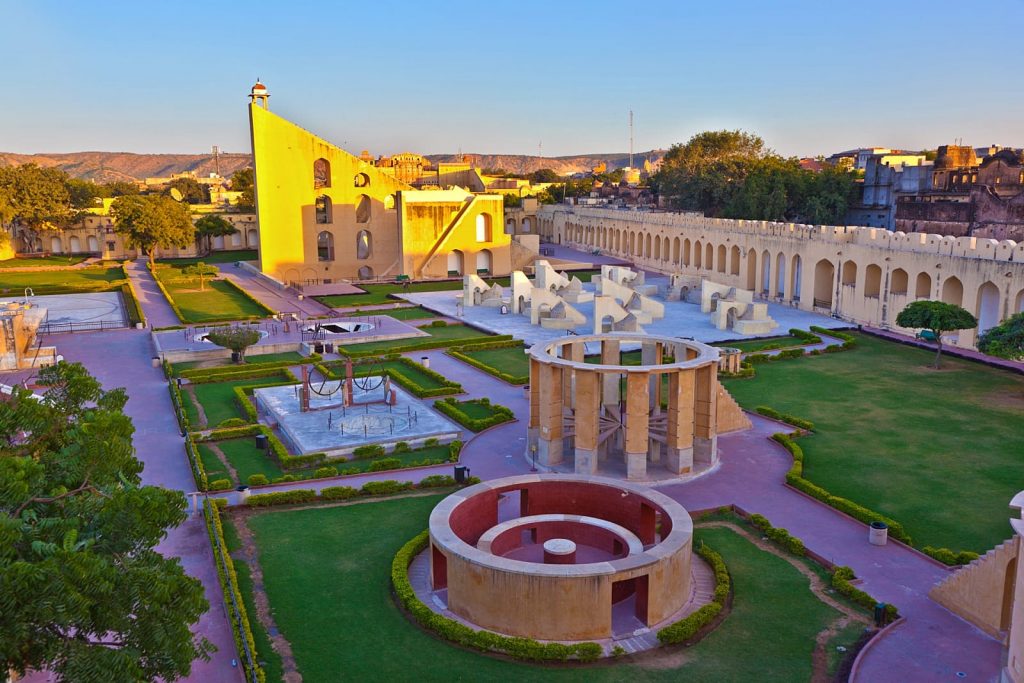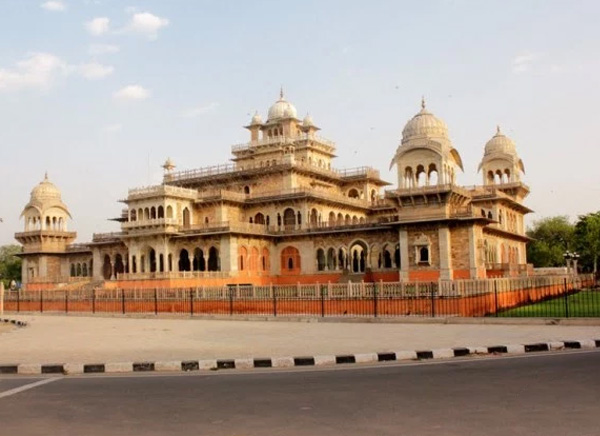City Palace

One of the most popular historical monuments of Jaipur is City Palace. It is famous worldwide for its exquisite architecture style, awesome artifacts and an intact charm of the gone by royal era. The architecture of the place is a beautiful blend of Mughal, Rajput, and European style. Most of the parts of the palace exhibit a variety of artifacts that were once used by the kings and queens of Jaipur. There are costumes, weapons, vessels and other artifacts that offer a harmful journey through the good old days. The palace has 4 different entrance gates and each one is associated with a particular season of India. Intricate and detailed designing offer these gates an elevated beauty.
Hawa Mahal

Just near the city palace is situated, Hawa Mahal. This beautiful historical monument resembles a crown if seen from a certain distance. According to the folklore, the Hawa Mahal was specially designed to resemble the crown of Lord Krishna. The major aim of the Hawa Mahal was to allow royal ladies to enjoy the street scenes of the city. In fact, due to the royal traditions, the royal ladies were prevented from public eyes. Hence, they had to follow several restrictions in order to save themselves from being seen by the public. This palace had 900 exquisitely carved lattices called Jharokhas that allowed the queens to relish the street scenes without being seen by the public. There are as many as 900 lattices in the palace. The Jharokhas or lattices also ensured the excellent ventilation and even during scorching summers of the city the palace remained adequately cool. Hence it got the name Hawa Mahal, the palace of wind. It was constructed in 1799 by Maharaja Sawai Pratap Singh.
Jantar Mantar

Jantar Mantar is a planet observatory at Jaipur that was constructed by Maharaja Sawai Jai Singh. The king was very much interested in astrology and he constructed this planet observatory to observe the planets in a more scientific manner and enhance his knowledge. The place has many astronomical instruments. Brass and stone are the two major materials used in the construction of these instruments. These instruments help in knowing about the precise astronomical positions of various heavenly bodies. The place is also famous for the largest sundial of the world, Samrat Yantra. This UNESCO World Heritage Site was built in 1738.
Albert Hall

Located amidst the lush greenery of Ram Niwas Garden the Albert Hall’s foundation was laid by Albert Edward, the Prince of Wales, in 1876.The building is tastefully carved to exhibit the regional architecture. Its well-carved domes and arches are very appealing to the eyes. The museum has a large variety of artifacts including musical instruments, apparels, carpets, wooden artifacts and tribal collection. There are dedicated sections for henna artwork that is uniquely refreshing.



